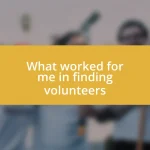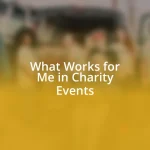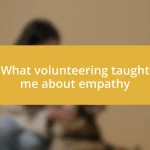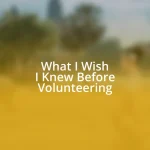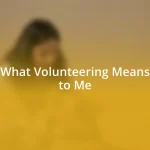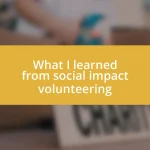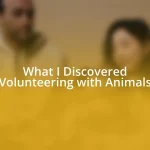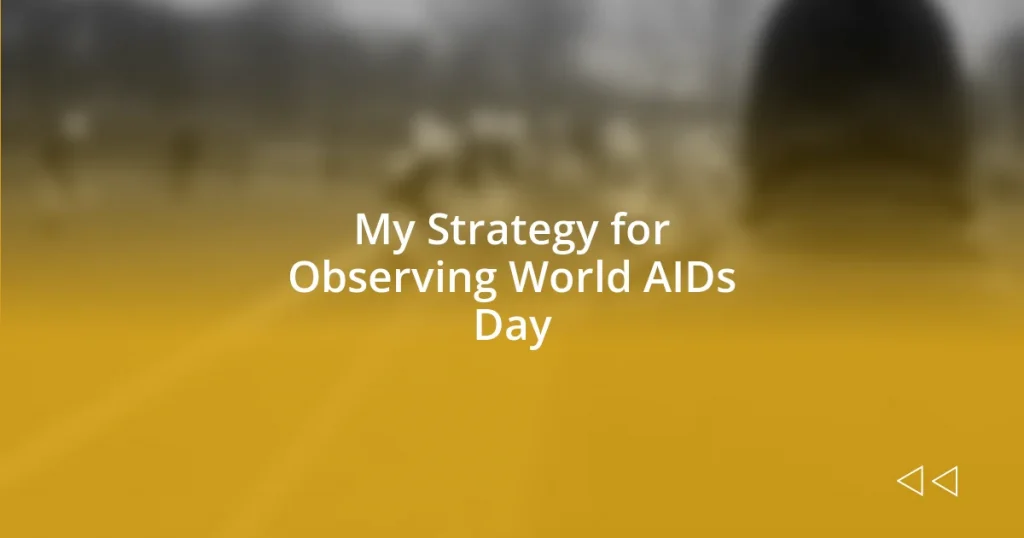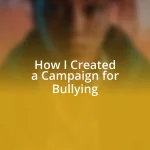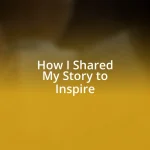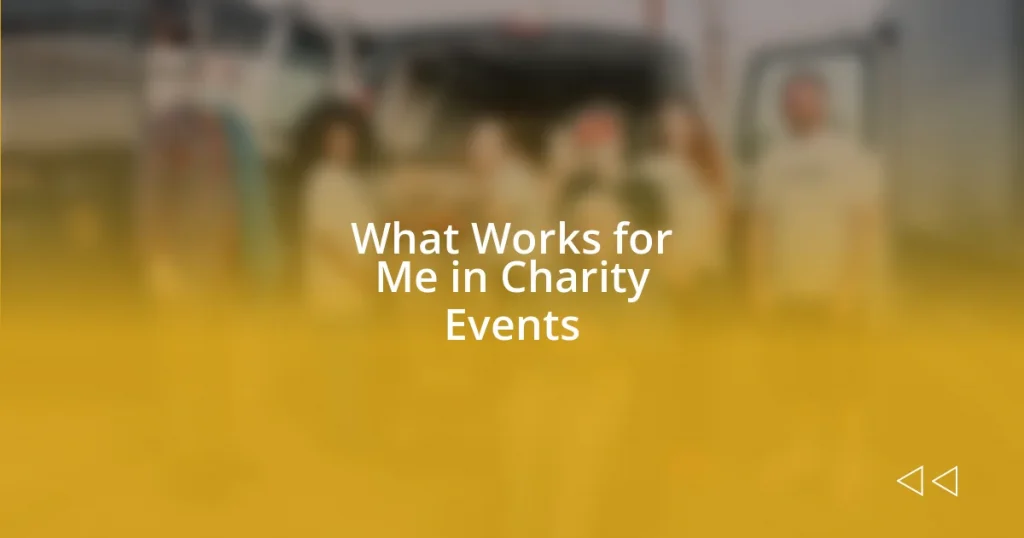Key takeaways:
- World AIDS Day serves as a reminder of the human impact of HIV and AIDS, emphasizing the need for compassion and understanding in community support.
- Setting personal goals for observation, such as educating oneself and volunteering, can lead to a deeper engagement with the cause and foster meaningful conversations.
- Utilizing social media for sharing experiences and educating others can amplify awareness and encourage open discussions about HIV, transforming perceptions and reducing stigma.

Understanding World AIDs Day Importance
World AIDs Day serves as a powerful reminder of the ongoing battle against HIV and AIDS. It’s not just a date on the calendar; it’s a day that brings to light the real human stories behind the statistics. I still remember attending a vigil one year, surrounded by candles and shared memories, realizing that each flickering flame represented a life touched by this disease.
Understanding the importance of this day means recognizing the strides we’ve made, as well as the work still ahead. What if we all took a moment to consider how our own lives can intertwine with this cause? Reflecting on my experience volunteering at a local clinic, I felt the weight of the emotional burden carried by those affected. Speaking with patients made me realize that compassion and education can bridge the gap of misunderstanding.
For many, World AIDs Day is a day to honor those who have passed, but it’s also a call to action for those of us still fighting for a better future. Have you ever considered how your own views might impact someone living with HIV? I’ve seen how openness can foster a supportive environment, allowing individuals to share their truths without fear. This day is about more than awareness; it’s about building a community rooted in empathy and support.

Setting Personal Goals for Observation
Setting personal goals for observing World AIDs Day can transform what may seem like a routine event into a deeply meaningful experience. Personally, I’ve found that establishing clear intentions helps me connect with the day’s significance on a much broader scale. For instance, one year I committed to learning more about the latest advancements in HIV treatment. Dedicating time to research not only enriched my understanding but also equipped me to engage in more compassionate conversations with those affected by the disease.
To make your goals impactful, consider the following:
- Educate Yourself: Read up on the latest HIV research or watch documentaries that showcase personal stories.
- Volunteer Your Time: Seek local organizations that support individuals living with HIV and look for opportunities to help out.
- Share What You Learn: Whether through social media or face-to-face discussions, engage others in thoughtful conversations about HIV and AIDS.
- Attend Local Events: Find vigils or informational talks in your community; I remember how attending one such event allowed me to meet others who share my passion for advocacy.
- Reflect on Your Impact: Take a moment at the end of the day to meditate on what you’ve learned and how it changes your perspective or actions moving forward.
By setting personal goals, you’re not just an observer; you become an integral part of the larger movement for awareness and support.

Engaging with Local Community Activities
Engaging with local community activities on World AIDs Day offers a unique opportunity to connect with others and amplify the message of awareness. I recall volunteering at a community health fair one year; it was incredible to witness the enthusiasm and commitment of local organizations. They set up booths offering free HIV testing and shared resources, creating not just an educational environment but also a supportive space for individuals to ask questions and get information. I could feel the energy in the air, mixing hope with determination.
Participating in a local march or vigil can elevate your personal experience into a collective one. During one march I attended, the roar of the crowd was electrifying, filled with voices of passion and solidarity. Holding a sign that displayed a message of love and support reminded me that every single person there has their own story, their own struggles. This experience not only brought awareness but also fostered a sense of belonging among attendees, allowing us to relate to each other’s journeys.
Furthermore, community workshops focus on discussing the realities of living with HIV, bridging gaps of misunderstanding. I remember a workshop where a speaker shared their lived experience, which was both heartbreaking and inspiring. Their honesty opened up the floor to discussions that moved beyond just facts and figures, allowing attendees to connect on a human level. It’s moments like these that show how important it is to engage with your local community; these actions reinforce the idea that we are all in this together.
| Activity | Description |
|---|---|
| Health Fair | Local organizations provide free HIV testing and educational resources. |
| March or Vigil | A collective demonstration of support and awareness, filled with shared stories and passion. |
| Community Workshop | Educational sessions where individuals share lived experiences and foster understanding. |

Utilizing Social Media for Awareness
Utilizing social media for awareness about World AIDS Day can create ripples of understanding that reach far beyond our immediate circles. I vividly remember posting a personal reflection on my experiences with the disease and noticing how it sparked conversations among friends. It was astonishing to see comments from those who, like me, had never discussed their family experiences with HIV before. This exchange of stories and support highlighted the power of sharing personal accounts, which can encourage others to speak up too.
The beauty of platforms like Instagram and Twitter lies in their wide reach and ability to share visual content. One year, I created an infographic that summarized important facts about HIV transmission and stigma. I wasn’t just hoping for likes; I yearned for people to share this information within their networks. As someone who has personally benefited from educational content shared online, I can attest to how one post can attract attention and catalyze understanding in unexpected places.
Engagement doesn’t only stop at sharing posts; inviting your followers to participate in discussions can amplify awareness. I once hosted a live chat focusing on the myths surrounding HIV, and the response was heartwarming. People opened up with their concerns and misconceptions, allowing us to dismiss harmful stereotypes collectively. Isn’t it refreshing to see how social media can transform from a mere platform of entertainment into a thriving community for education and support? Through these interactions, I’ve learned that even digital conversations can instigate personal change and foster greater empathy toward those living with HIV.

Documenting Your Observations and Impact
Documenting your observations and the impact of your World AIDS Day activities can be a powerful tool for reflection and advocacy. I remember after a local seminar, I took a moment to jot down my thoughts and the moving stories shared by the speakers. Capturing those emotions not only helped me process what I had learned but also equipped me to share my newfound insights with others who couldn’t attend. It struck me how vital it is to translate experiences into words, ensuring they resonate beyond that single day.
Visual documentation can also enhance your impact. I started taking photos during events, aiming to capture the genuine interactions and moments of connection. One particular photo of two community members sharing a laugh over a serious topic became a favorite of mine. It perfectly encapsulated the vulnerability and strength in discussing HIV openly. Isn’t it interesting how a single image can convey an entire narrative? I often find that visual storytelling sparks more interest and conversation than words alone.
Sharing your documented experiences on platforms or in discussions can further extend their reach. I once compiled a mini-report after a candlelight vigil, sharing personal reflections alongside collected testimonials from attendees. When I posted it online, the response was overwhelmingly positive; many reached out to express their gratitude for shedding light on such an essential topic. Seeing my documentation spark meaningful dialogue was an eye-opener—how much more impactful can our experiences become when we share them authentically?
